In our rapidly evolving digital landscape, providing a seamless and impressive experience to customers during sales interactions is paramount. Recent research by Forrester underscores the importance of personalized interactive visual content, with 91% of B2B buyers expressing a desire for it in their decision-making process. To meet these modern demands and boost your sales, embracing the right digital sales enablement tools to help can be transformative. Sales enablement tools’ main purpose is to empower sales reps with the right content, at the right time, with minimal searching.
Continue reading to explore the key factors we recommend keeping in mind when contemplating the integration of a sales enablement tool into your sales strategy.
Key considerations
01.Cost
So, when evaluating sales enablement tools, cost might be one of the first aspects you need to consider. Platforms for advanced tools, in addition to licensing, may charge setup fees, especially for complex integrations. These setup fees can range from £10,000 ($10,000) to £30,000 ($30,000) or more. Other cost-related factors to consider include:
- Presentation Builder: If there is one, you should determine if there are charges for creating your first interactive sales experience using the platform’s presentation builder.
- Training: Confirm whether training is included in the overall price to avoid unexpected costs post-deployment.
- Ongoing Support: Understand the level of ongoing support and whether it incurs additional costs. Check for any grace period with free support after deployment.
- Upgrades and Maintenance: Inquire about updates, bug-reporting procedures, and the product roadmap. Clarify if upgrades come with additional costs.
Exploring these variables is essential for a comprehensive understanding of the pricing structure, helping avoid surprises in your budget. For more in-depth information, refer to our dedicated blog on this topic here.
02. Your objectives
Defining objectives is pivotal for rolling out a successful sales enablement tool. A clear vision of what you expect the platform to achieve establishes the foundation for effective implementation and its impact on your overall sales strategy.
“We could have built an awesome looking sales tool, but if it doesn’t solve an immediate need that the sales team are facing then it isn’t going to be of use or useful.”
Dan Cheung, Marketing Manager, Wienerberger
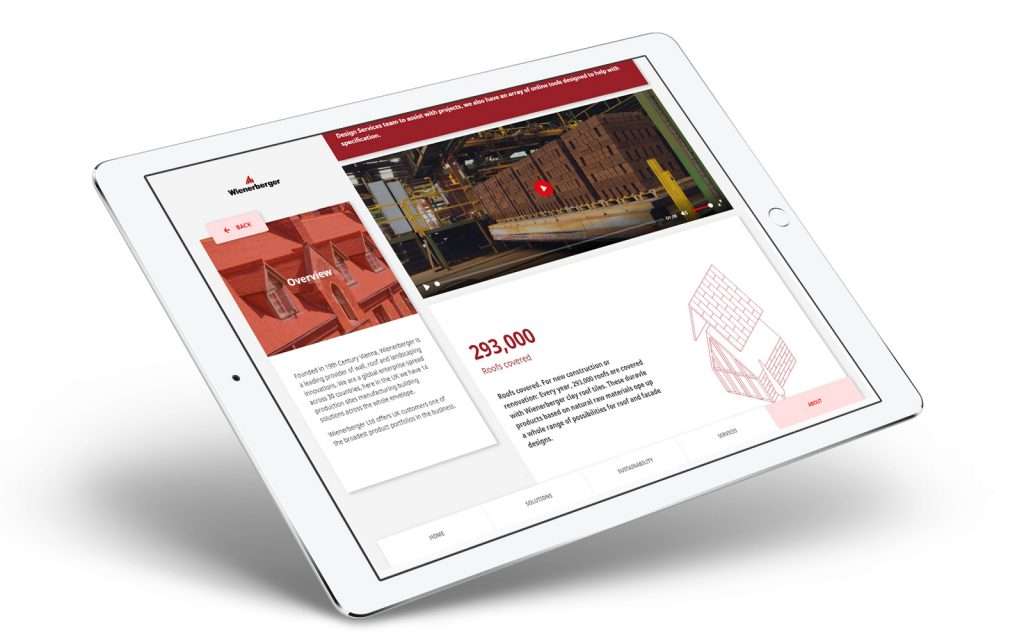
Our initial recommended step is to survey key stakeholders including those from sales, marketing, and product management. This aims to uncover both internal and external challenges encountered by the sales team and the factors contributing to successful customer conversations.
Following this initial step, we suggest a facilitated workshop for a more in-depth exploration of customer personas, specific challenges, and potential solutions. During this workshop, you can delve into specific functionality and content, while also defining success criteria. Simultaneously, the workshop fosters consensus and buy-in across the business to establish a unified vision.
It is essential to create a comprehensive report summarizing all the discussions and agreements. The report should encompass the following key aspects:
- Customer personas
- Usage scenarios and deployment methods for the sales tool, such as on tablets during meetings, touchscreens at events, virtually, or a combination of these
- Success metrics for the organization, customers, and the sales team
- Requirements related to user experience, content, and technical aspects.
This detailed output serves as the foundation for prioritization and forms a strategic development plan to seamlessly integrate a sales enablement tool into your sales strategy.
03. Content
By defining your objectives, you should now have clarity regarding your customers’ requirements, the necessary content to support your sales conversations, and the channels and places where these conversations will take place.
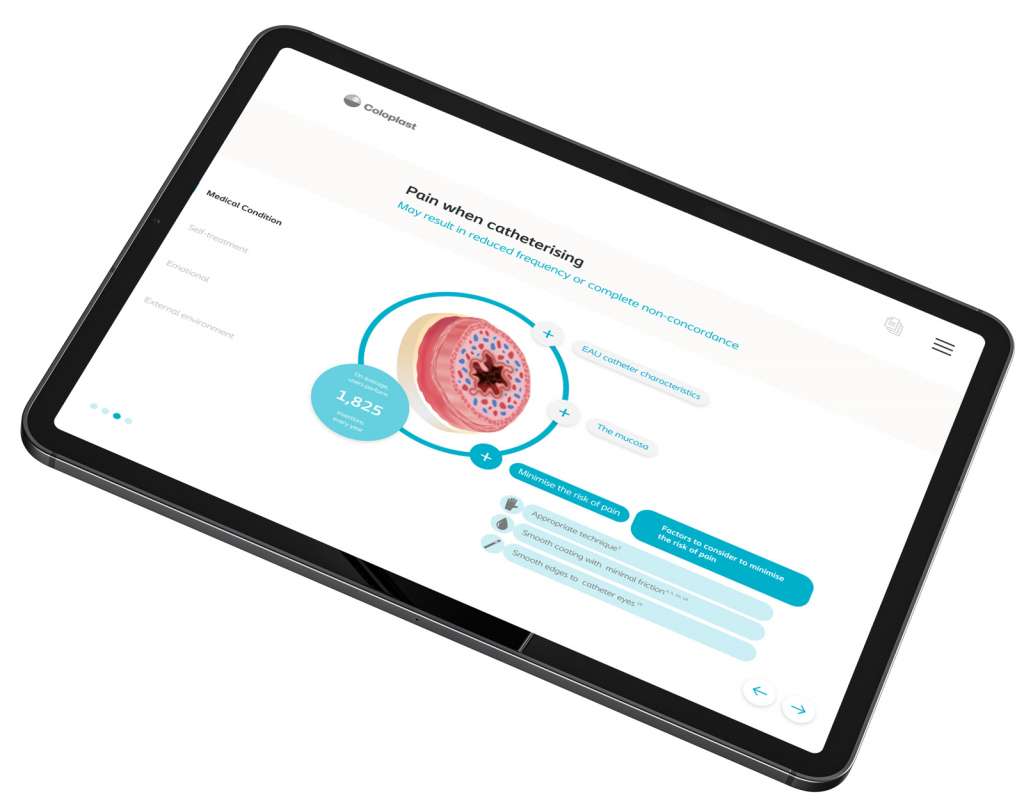
“POP challenged us and guided us on the best way forward. It took me a while to get away from an analogue printed page mindset. POP’s knowledge of the user interface was invaluable.”
Clare Dawson, Marketing, Coloplast
Selecting existing content
The next consideration is what content you would you like to access. Much of it will already exist in your business in the form of brochures, videos, PDFs, presentations and case studies. Technology may already be in place – a Content Management System (CMS), a Digital Asset Management system (DAM) or a Product Information Management system (PIM) – which can help you to identify and retrieve these assets.
If these business systems are already in place, integrating them into your chosen sales enablement platform is highly recommended. This integration ensures seamless alignment between sales and marketing, providing confidence that everyone using the experience can access the latest and most relevant information when engaging with customers. This becomes particularly crucial in dealing with different regions or operating within highly regulated industries.
New content
Top-notch sales tools depart from accessing static, linear information and visuals. Instead, they aim to tell a more dynamic, interactive story, centered on the challenges and needs of the customer. This approach not only engages the audience more effectively but also aligns the sales process with the dynamic nature of customer interactions.
It’s possible that you’ll determine the need for new content creation, tailoring further content to meet evolving customer expectations and enhance the overall interactive experience. Some sales enablement platforms will help you to create interactive content that can support a consultative sales narrative with multiple audiences and could include:
- Interactive process charts
- Product visuals with deep-dive hotspot content
- Interactive infographics
- 3D models and graphics
- Gamification
To see how these work in action, take a look at our video here:
However, exciting as these elements are it is important to remember, and to keep referring to, your original business objectives. Content is only king if it helps to deliver your core message.
“We needed to deliver a message that really mattered to our customers in a succinct and impactful way, but without losing the important messages. POPComms achieved that for us.”
Ceren Balkanay, EMEA Product Manager, GCP Applied Technologies
04. How it is designed and structured
How the content and sales narrative is brought to life is the next consideration and plays a huge role in the RoI of your sales enablement tool. This phase is also about developing the user experience – how a sales rep and customer will navigate through the experience moving between the content.
Wireframing
We always recommend starting with wireframing – the focus here is on creating simple, clear layouts, page by page, for your content based on the agreed structure. Establishing where specific content appears within your experience, the narrative flow and the user journey. It is easier and more cost effective to make changes to these low-fidelity layouts at this point, rather than during the more detailed design phase.
Creative design
Once the wireframes are agreed the next step should be the creative design stage, where potentially complex ideas, messages and concepts can be turned into simple yet visually powerful and compelling graphics. The main objective is to make it as easy as possible for people to quickly understand exactly what you do and the value you deliver.
This is where the magic comes in, adding that layer of creative WOW! over the content and structure to really bring all that hard work invested to life.
Creative elements can really help to bring your story to life and could include:
- 3D Cityscapes
- Infographics
- Video animations
- 3D models
- Interactive content
- Videos
- Configurators and calculators
- Augmented reality etc.
“We came to POPcomms because we wanted to tell a story. When presenting to customers you have to find the heart of the message and deliver it in a visually impressive and memorable way – and POPcomms do just that every time for us.”
Andrew Davidson, Head of Marketing, Hosting, Network & Security, Fujitsu
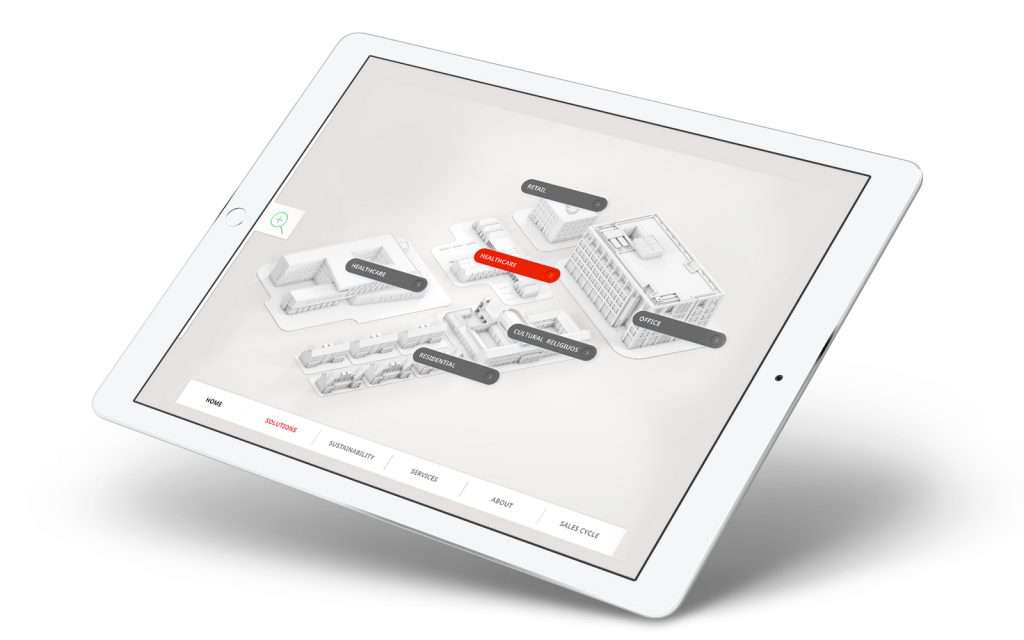
05. The development approach and the technical integrations needed
Embarking on a digital sales enablement tool can be a complex software development project, involving multiple stakeholders, objectives and requirements. The development approach, technical requirements, and the platform to be used can be the most costly phase if not fully considered at the very beginning.
Development approach
We always suggest that you aim to release a minimal viable product (MVP) version of your first sales experience that includes on the essential features necessary to meet the initial needs of your early sales and customer adopters so that you can gather feedback for future development. The primary goal of creating an MVP is to quickly bring a functional product to market with minimum resources, allowing for rapid learning and iteration based on user feedback. An MVP will enable your teams to continuously improve and tailor the experience to better match your customers needs and market demands.
Technical requirements
There may be technical integrations to be considered with other existing software platforms, where the platform will be hosted and any security features. If your sales team need to use the system in low or no network coverage areas then it will need to be able to run offline.
The platform
The platform is the engine that drives your sales tool. By implementing a sales enablement platform with centralized repositories for marketing collateral, presentations, and product information, you can provide instant and easy access to the right material for your sales teams. While conventional sales enablement platforms offer easy access and customization for sales reps, opting for an interactive sales experiences platform goes beyond. These platforms represent a perfect blend of technology, interactivity, and creativity, breathing life into your sales presentations. Featuring interactive elements, seamless integrations, and robust analytics, they can metamorphose your presentations into dynamic, memorable experiences with the WOW! factor, significantly enhancing and supporting your sales conversations.
The essence of consultative selling lies in personalization and interactivity, where the ability to understand and respond to customer needs in real-time makes a significant impact. Interactivity possesses the transformative power to turn presentations into dynamic conversations, deviating from the conventional linear static format that often results in disengagement. Enabling your sales team to swiftly customize and personalize content allows presentations to dynamically unfold, aligning with the audience’s preferences and delivering the right information at precisely the right moment.
Interactive sales experiences platforms provide robust analytics, offering insights into customer engagement with your presentations. These platforms empower you to track the most resonant content in your presentations, enabling continuous refinement and more targeted follow-ups. Eliminating guesswork, these platforms allow precise identification of areas of interest and disinterest. Crucially, integrations with key business systems like CRMs, DAMs, and PIMs are pivotal, establishing a seamless workflow between sales and marketing. These integrations are indispensable for maintaining message consistency and ensuring the precise capture and effective utilization of all customer interactions.
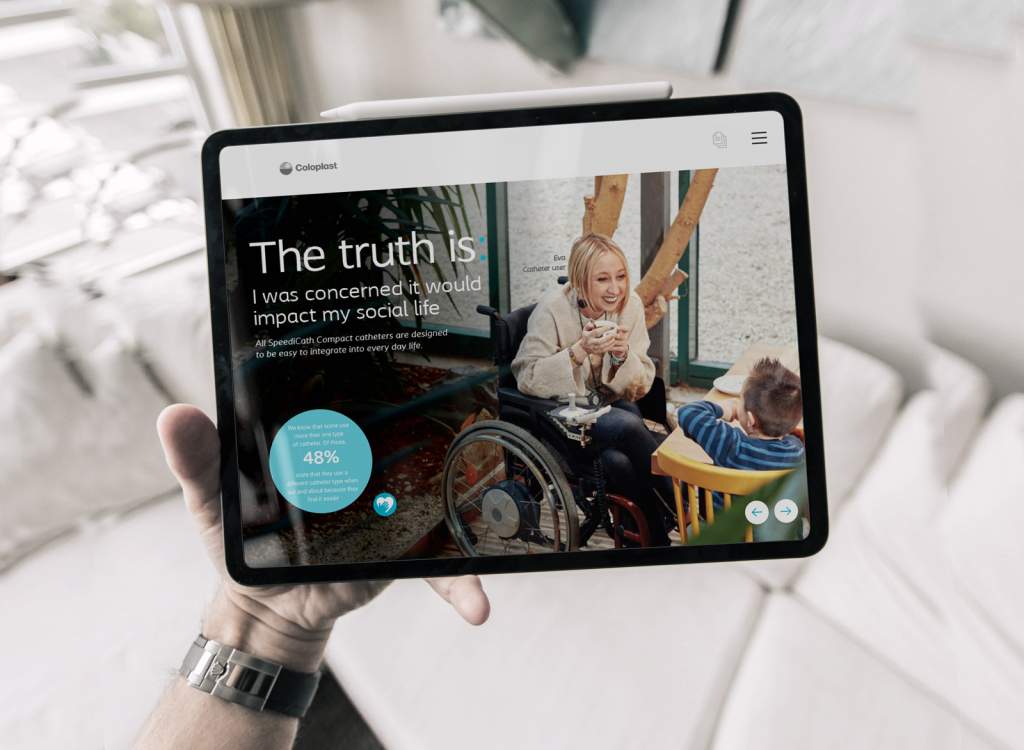
06. Analytics, data intelligence and ongoing development
Once your sales tool is being used out in the field with customers, the process of continuous monitoring begins, fine tuning and extending the functionality.
The evaluation of your sales tool comes from both quantitative data using analytics, and by gathering qualitative feedback from your sales team and customers. All tracked against KPIs that can help to fine tune the sales tool’s content and messaging, in addition to providing insights for training requirements and additional content.
“The enhanced App POP built us provides our sales teams with that extra bit of magic, which sets us apart from our competition, and is both smart and trackable.”
Dan Cheung, Marketing Manager, Wienerberger
There will also be internal and external pressure on how your tool develops, with changes to business objectives, market factors, customer requirements and with shifts in business operations – such as the push to remote working as seen with Covid.
What next?
Once you have an idea of what you want to achieve with adding a sales enablement tool to your tech stack, it’s time to sit down with prospective providers and discuss all aspects of implementing a solution.
If you’d like to know more about investing in an interactive sales experiences platform like POP and to find out about the features and benefits for your business , then please book a demo or get in touch on +44 (0)117 329 1712 or hello@popcomms.com.
Let us introduce what we do in the video below…
Related Posts
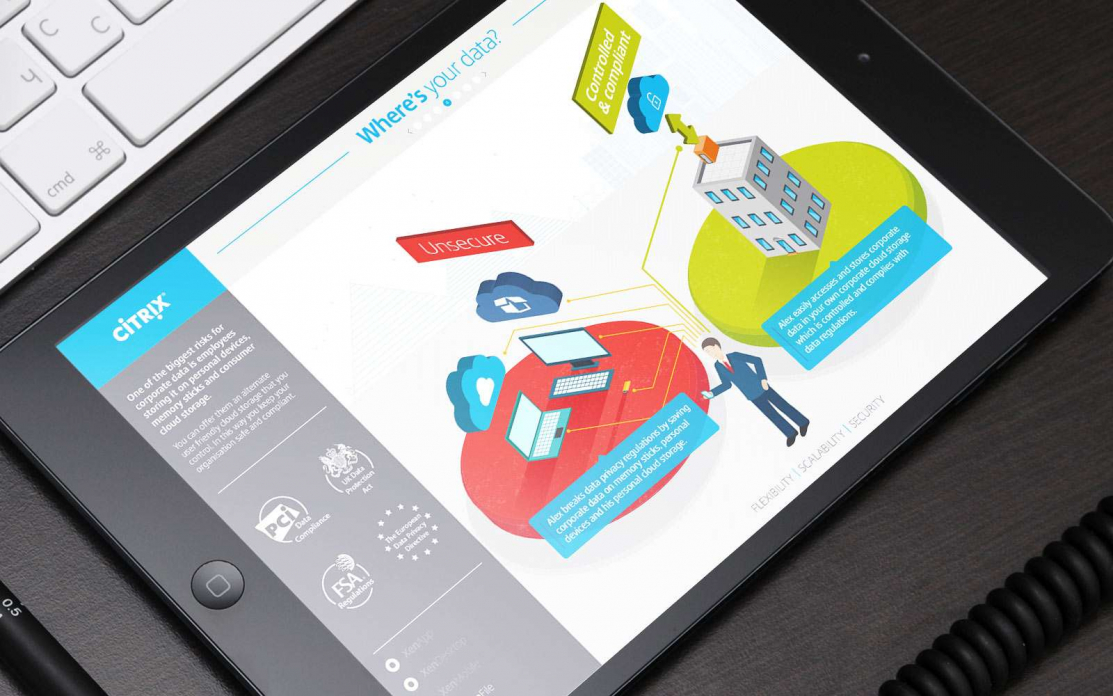
What Makes Visual Storytelling So Important For Sales Presentations?
Read

Why Interactive Sales Tools Are So Effective at Building Long-Term Customer Relationships
Read
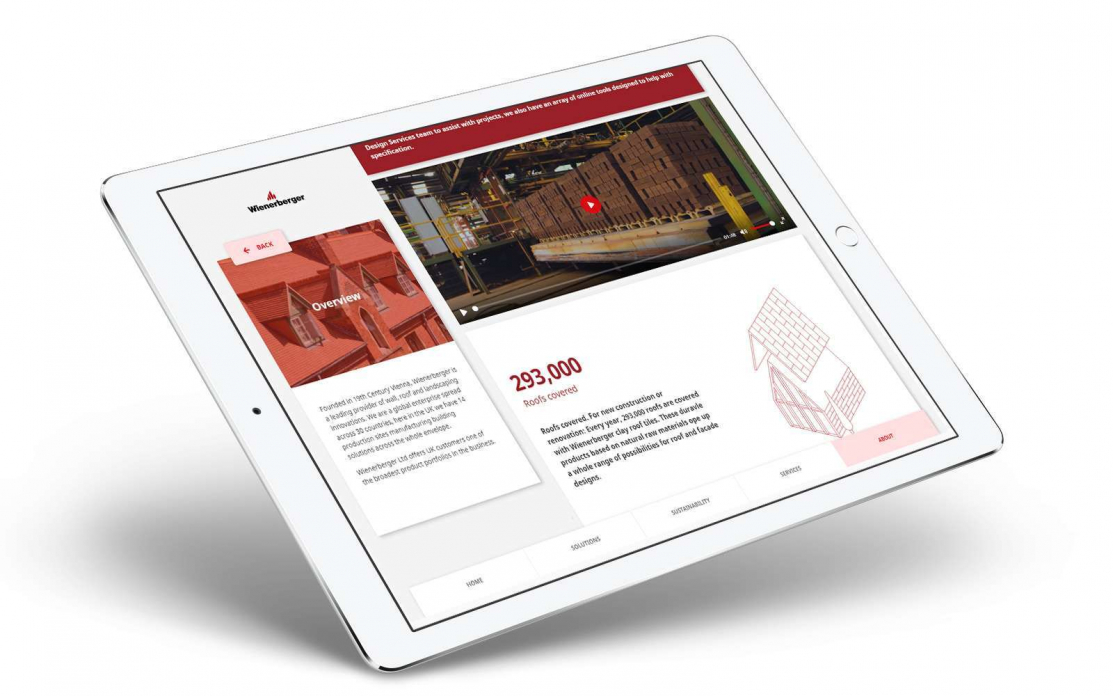
5 Sales Enablement Best Practices to Help Drive Growth
Read
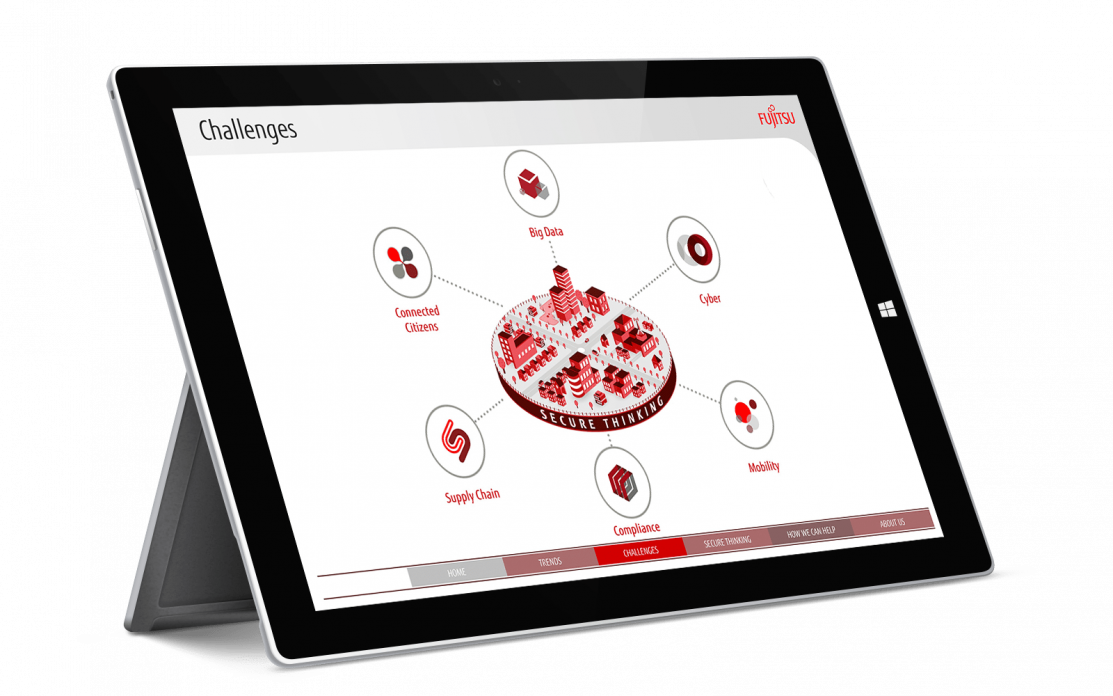
How Interactive Sales Tools & Experiences Can Deliver the WOW Factor
Read